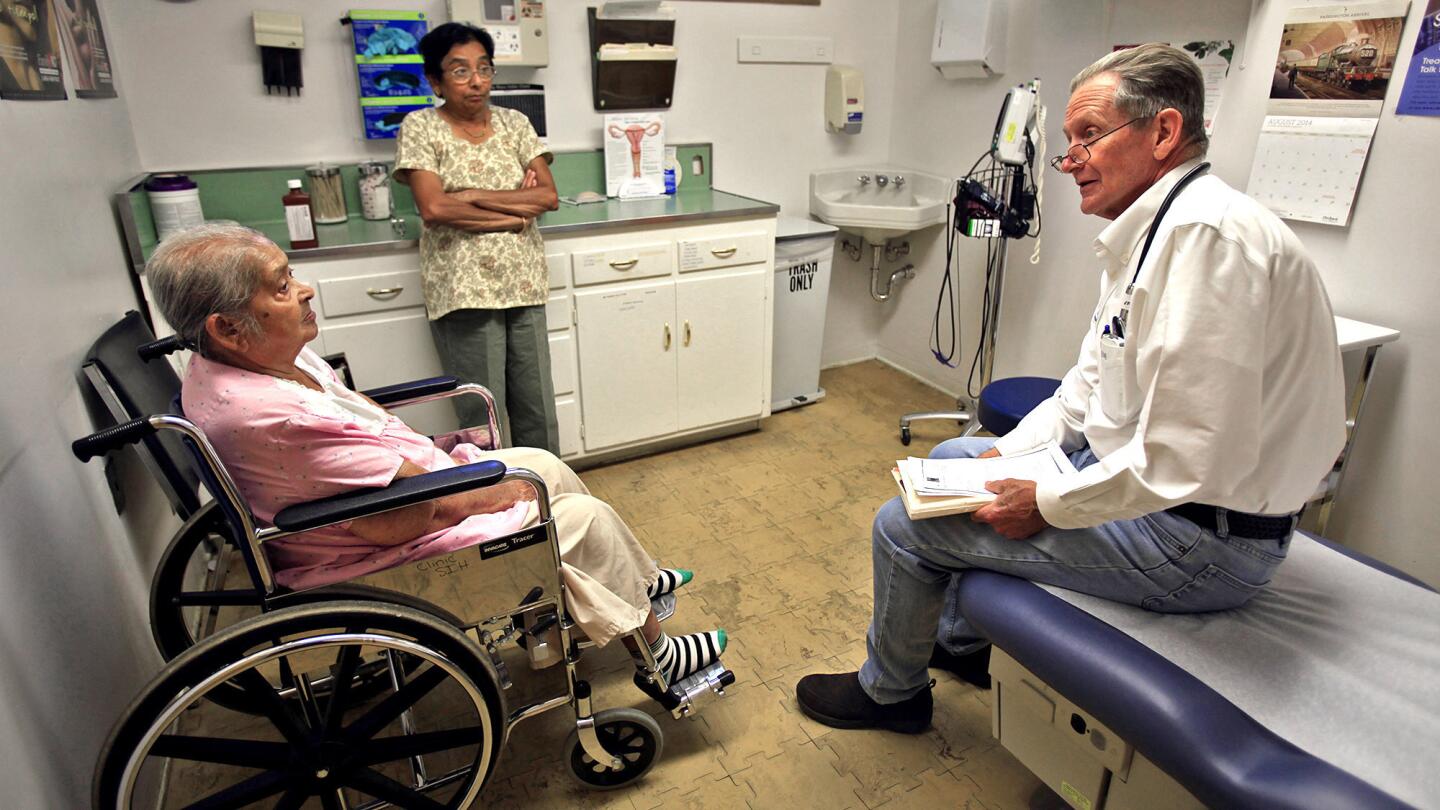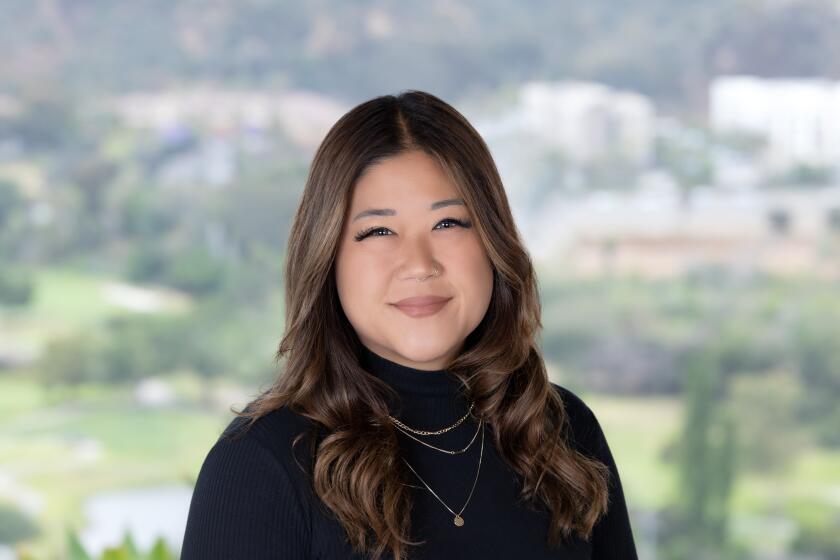Using mobile phones to link patients and doctors seems like a natural in rural communities, where medical offices are sparse and traveling difficult. But technological hurdles may slow m-health in isolated areas, according to one Sierra cardiologist.
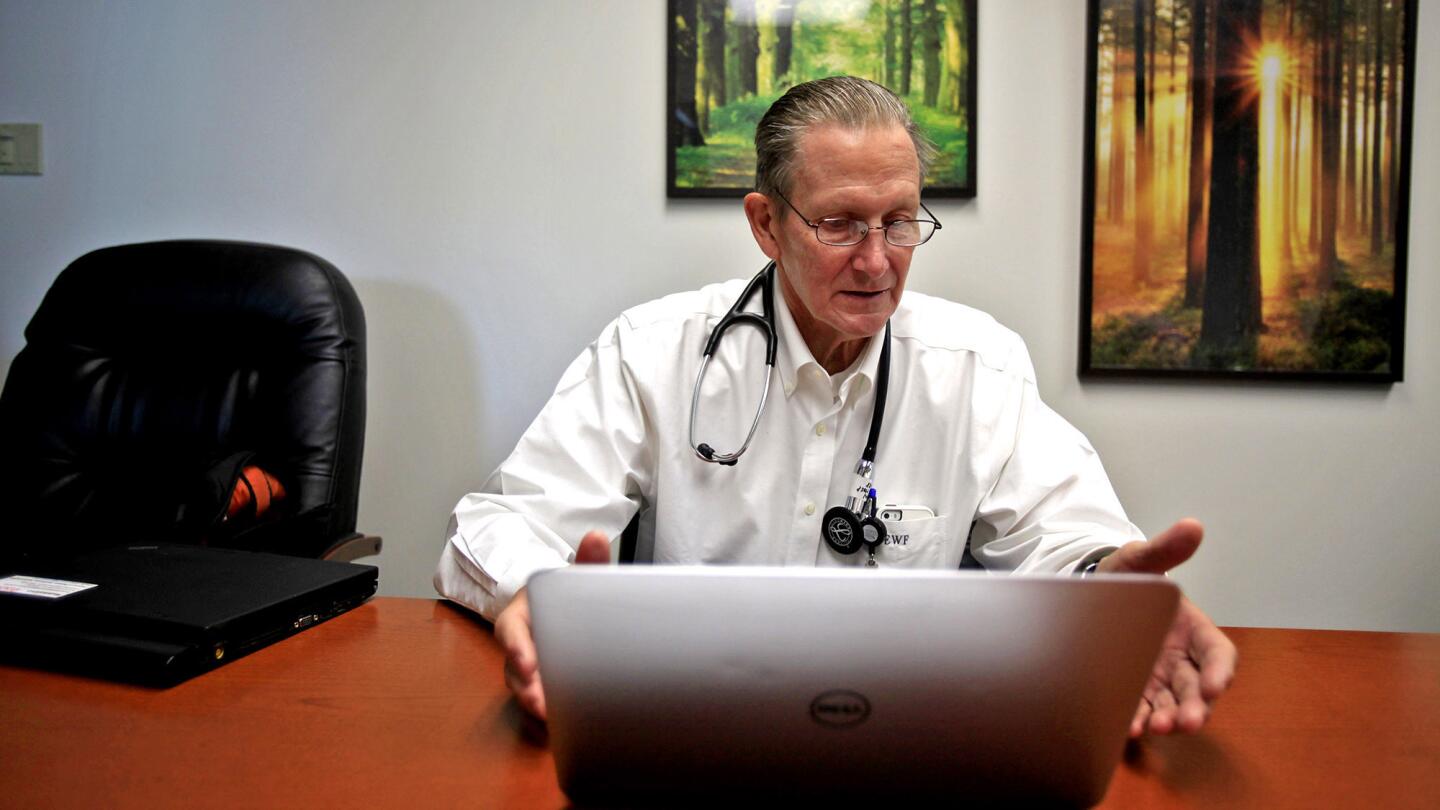
Dr. Earl Ferguson, a cardiologist, works on one of his three laptops at Ridgecrest Regional Hospital. He’s been doing telemedicine since the 1990s. (Francine Orr / Los Angeles Times)
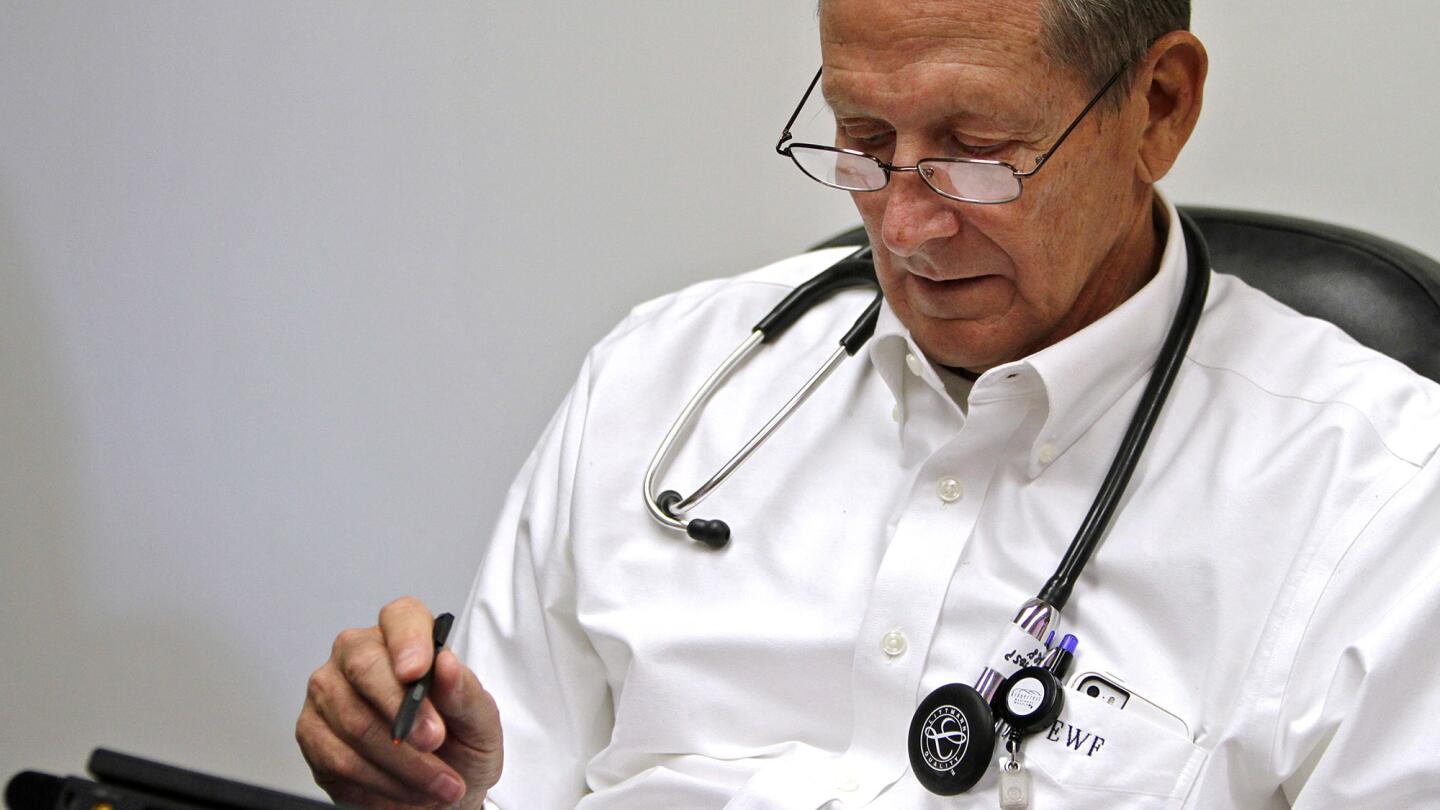
Dr. Ferguson was a founder of the California Telehealth Network, which connects nearly 800 medical sites in the state. Oh, and he loves his new digital stethoscope. (Francine Orr / Los Angeles Times)
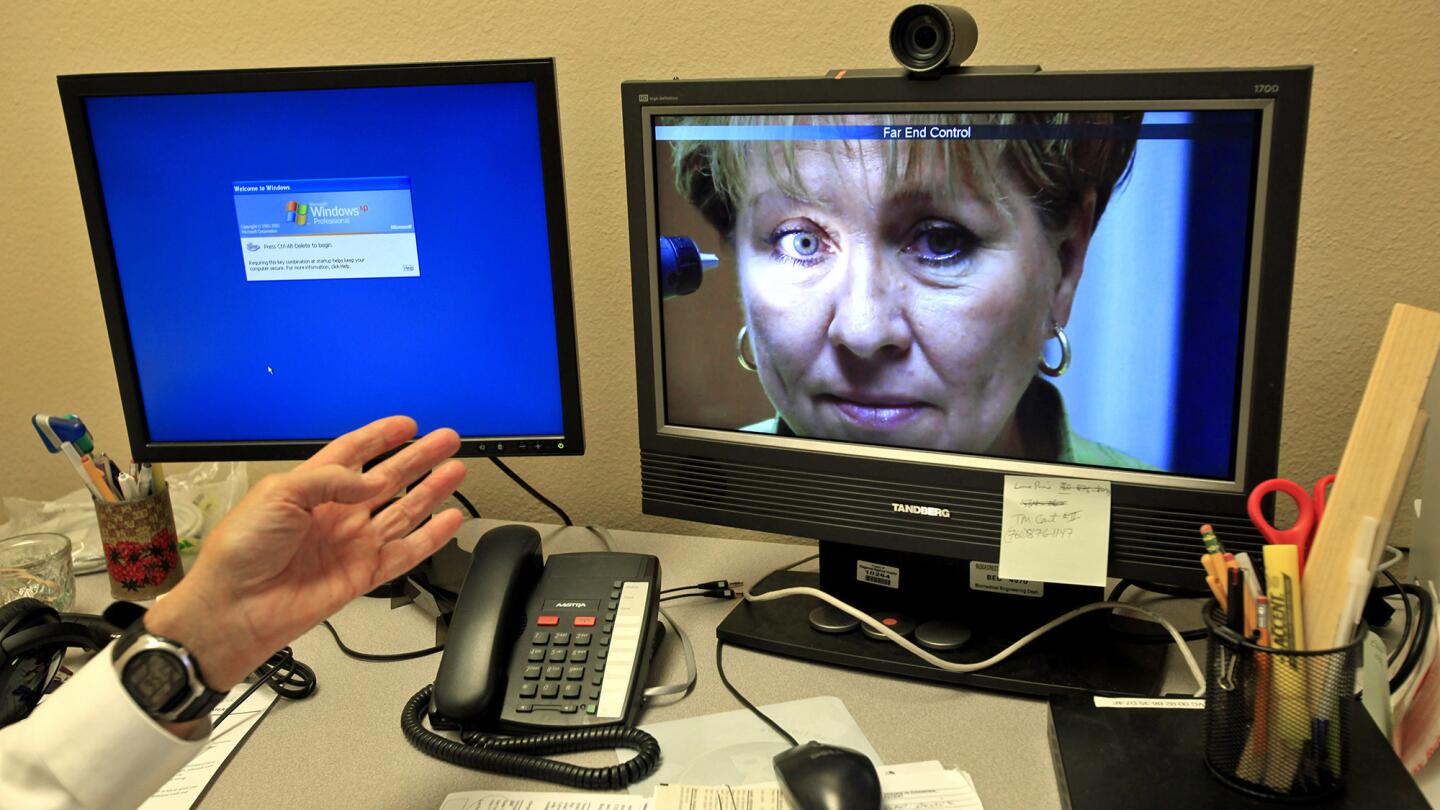
From an office in Ridgecrest, Dr. Ferguson communicates with Laura Saldana, clinic manager at Southern Inyo Hospital clinic in Lone Pine, who demonstrates some uses of the technology. (Francine Orr / Los Angeles Times)
Advertisement
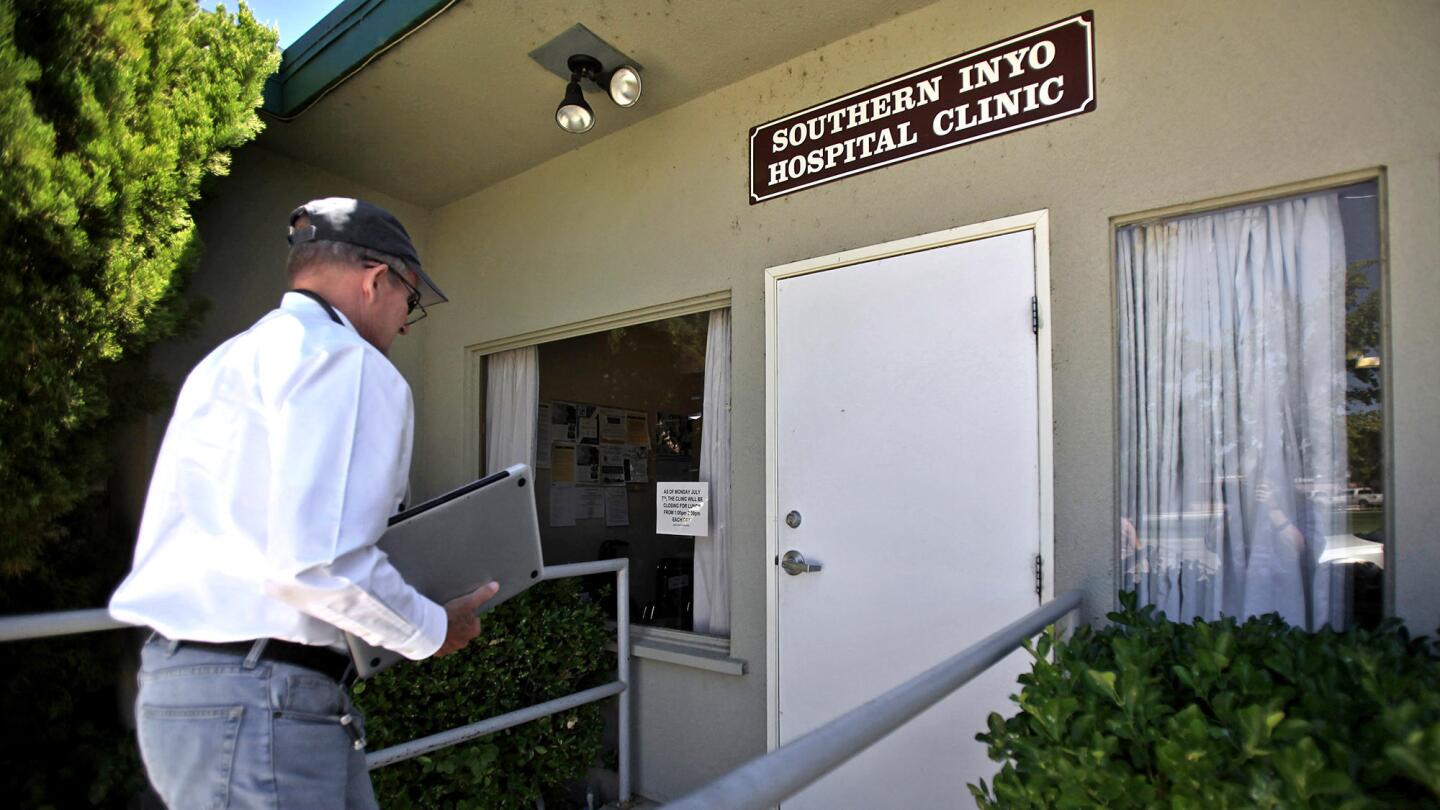
Dr. Ferguson brings along one of his laptops on a stop at tiny Southern Inyo Hospital clinic in Lone Pine. (Francine Orr / Los Angeles Times)
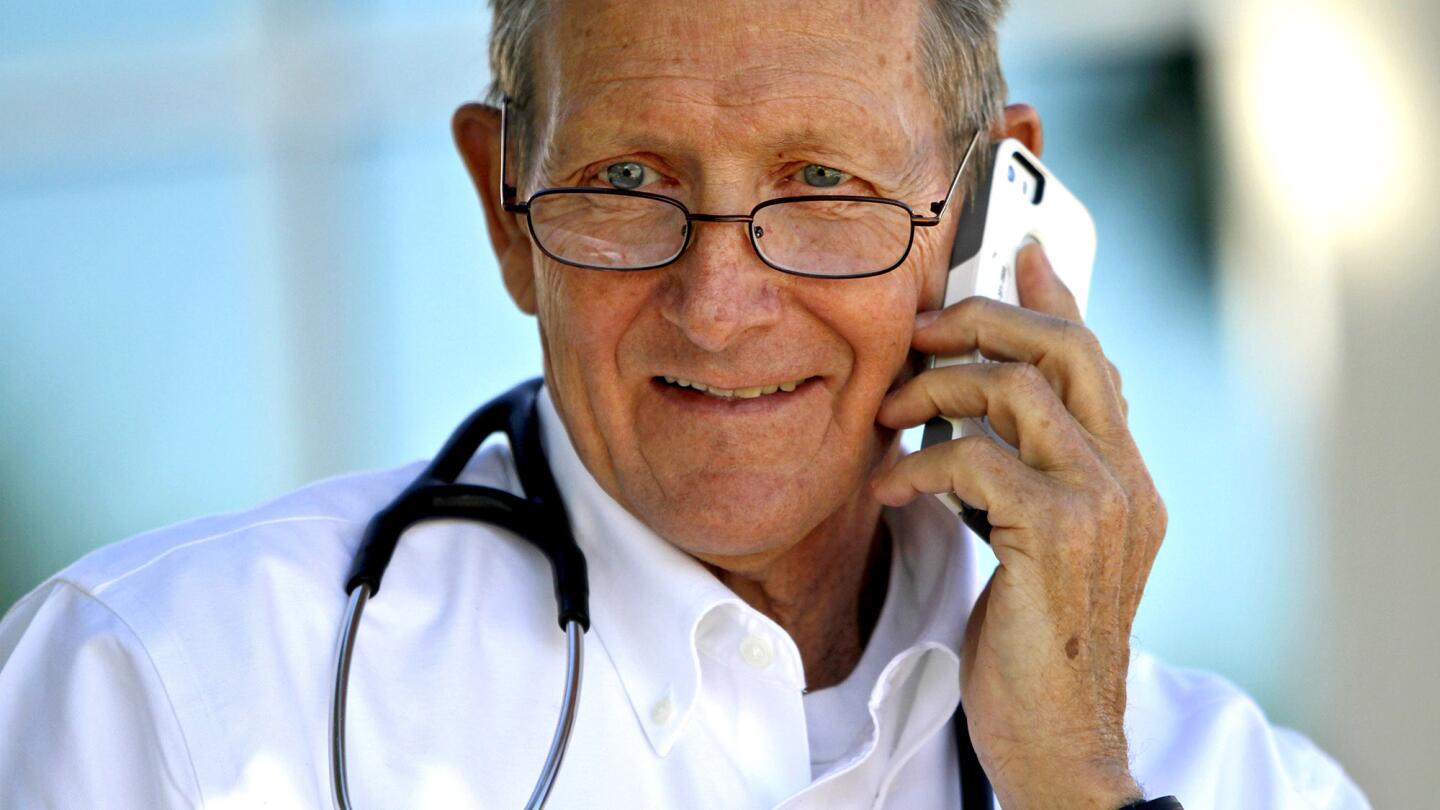
Dr. Ferguson uses his iPhone to be in contact with Ridgecrest Regional Hospital. Many patients, though, don’t own such smartphones. (Francine Orr / Los Angeles Times)
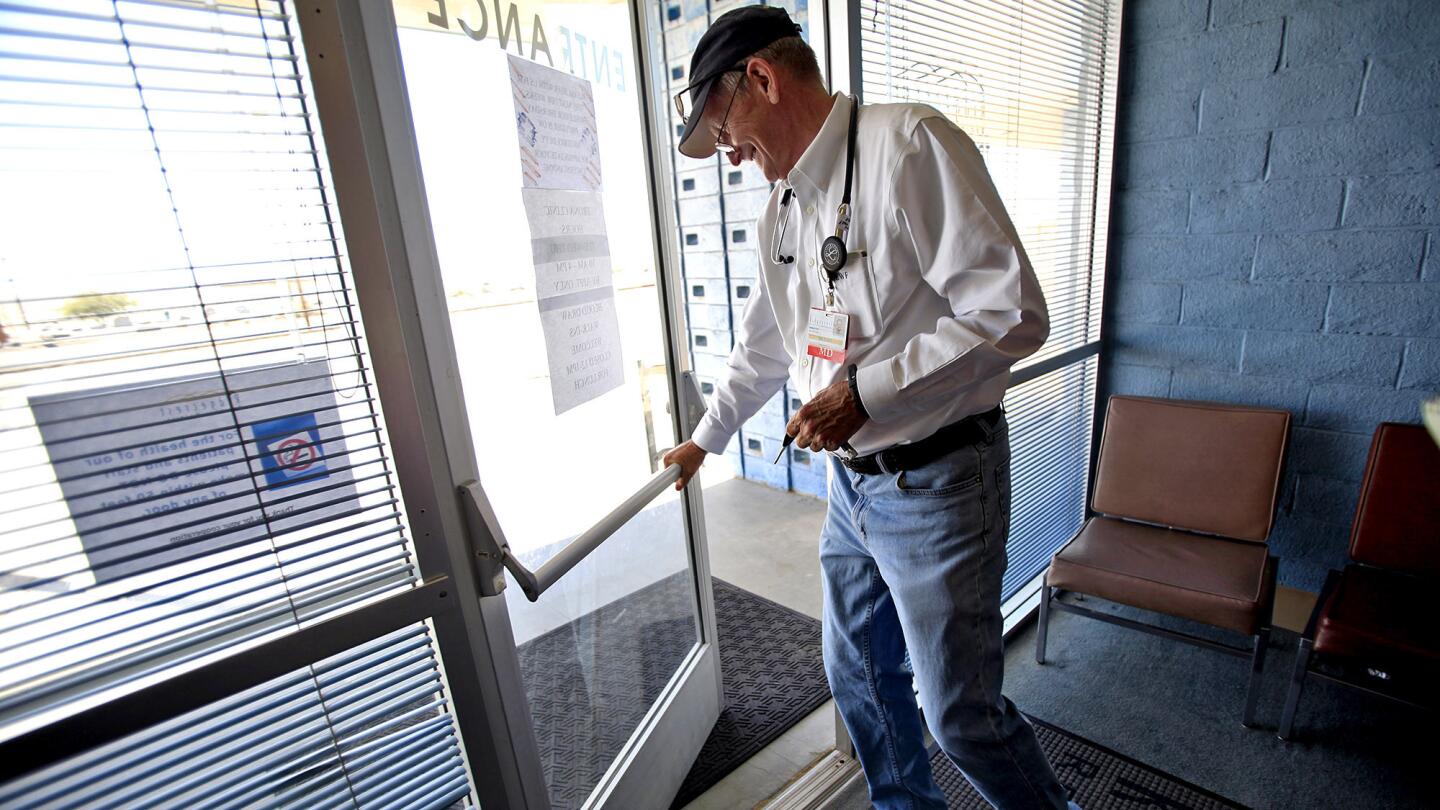
Dr. Ferguson exits the new Trona health clinic, about half an hour east of Ridgecrest. The community of Trona is a mining outpost of fewer than 3,000 people. (Francine Orr / Los Angeles Times)
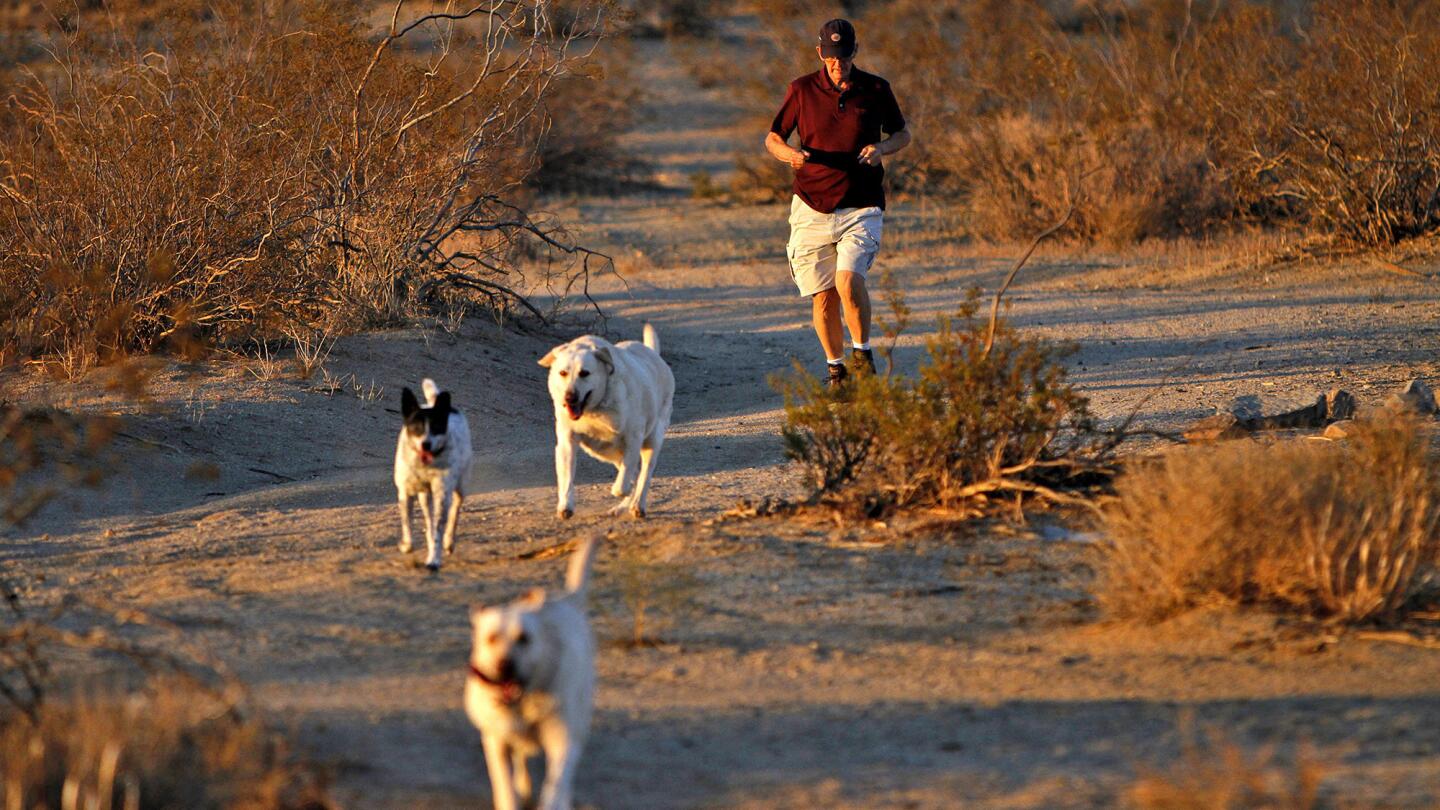
Dr. Ferguson, who lives in off the grid in Ridgecrest, makes evening exercise part of his routine. (Francine Orr / Los Angeles Times)
